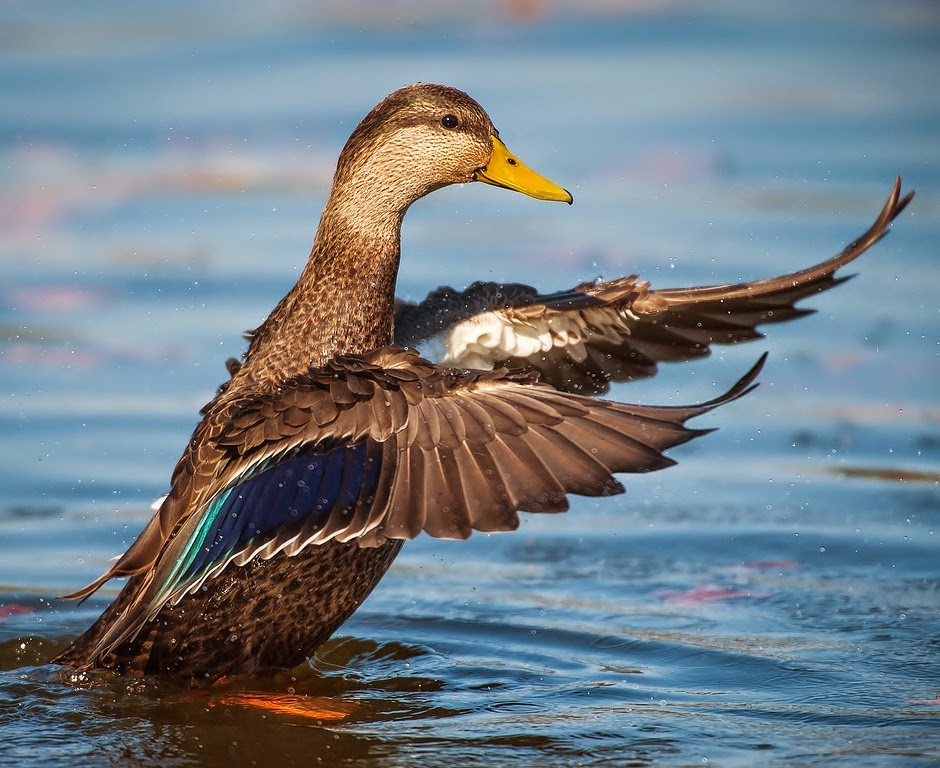 |
| Photo by Ed Post (Flickr) |
Common name:
American black duck (en); pato-escuro-americano (pt); canard noir (fr); ánade sombrío (es); dunkelente (de)
Taxonomy:
Order Anseriformes
Family Anatidae
Range:
This species breeds in north-eastern North American, in Canada from northern Saskatchewan to Newfoundland, and south to Minnesota, Illinois, Pennsylvania and North Carolina in the United States. The population from Canada migrate south to winter throughout the eastern United States down to the Gulf Coast.
Size:
These birds are 53-61 cm long and have a wingspan of 95-96 cm. Females tend to be smaller than males, weighing 720-1.380 g, while males weigh 820-1.760 g.
Habitat:
The American black duck breeds in freshwater wetlands, including lakes, beaver ponds, streams, boreal bogs and woody swamps, favouring areas bordered by trees. Outside the breeding season they also use brackish and saltwater wetlands, including saltmarshes, estuaries and coastal lagoons, as well as agricultural fields.
Diet:They feed on the seeds, roots ,stems and leaves of aquatic and crop plants, as well as aquatic insects such as larvae of mayflies, caddisflies, dragonflies, flies, midges and beetles, crustaceans, molluscs and sometimes fish.
Breeding:
American black ducks are monogamous and breed in March-June. The female builds the nest alone, a scrape on the ground lined with grass, twigs, leaves, stems, conifer needles and down feathers, usually hidden among vegetation or sometimes in a tree cavity. There she lays 7-12 eggs which she incubates alone for 23-33 days. The male remains with the female for the first 2 weeks of incubation, helping defend the nest. The chicks leave the nest within 1-3 hours of hatching and follow the mother to a rearing area which is abundant in invertebrates and vegetative cover. They start flying about 60 days after hatching and reach sexual maturity at 1 year of age.
Conservation:
IUCN status – LC (Least Concern)
This species has a very large breeding range and the global population is currently estimated at 715.200-1.274.000 individuals. The population has possibly declined by about 50% since the 1950s, but the rate of decline became slower in recent decades. The main threats affecting the American black duck are hunting, competition and hybridization with mallards Anas platyrhynchos, wetland pollution and lead poisoning.







